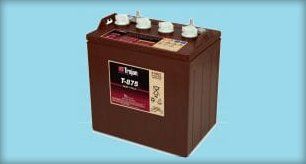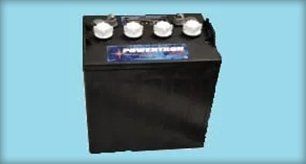Golf Cart Batteries
- Family Owned Business Since 1997- Honesty, Integrity and Experienced Mechanics- Large Selection of New & Used Carts
Visit Us
Golf Cart Batteries You Can Count On
When you need a high-quality battery for your golf cart, Cart City is the name you can trust! The deep-cycle batteries of Trojan we house have unrivaled premium features and provide the best benefits to our customers. You can check out the features and benefits below:
- Trojan’s SureVent™ flip-top vent cap system makes watering your battery safer, faster and easier
- Trojan’s vent well offers a built-in maximum level indicator for precise watering resulting in better performance and longer life
- Trojan’s embedded terminals provide higher durability
Take a Look at Some of Our Golf Cart Batteries
- 6 volt batteries
- Trojan T-105
- TrojanPowertron P2000
- 8 volt batteries
- Trojan T-875
- Trojan Powertron P8000
- 12 volt batteries
- Trojan T-1275
- Trojan Powertron P12000
Battery Operation and care
Charging:
- Correct charging methods extend battery life and range between charges
- Charge new batteries completely before they are used the first time
- Charging time will probably be at least 12 hours
- New batteries need up to four hours more charging time than mature batteries
- Schedule enough charging time, if possible, so the charger shuts off automatically
- Age of battery, condition of the battery, state-of-discharge, the temperature of the electrolyte, AC line voltage level, and other variables affect charging time
- Limit the use of new batteries between charging for the first 5-20 cycles (new batteries have less capacity than batteries which have been broken in)
- New golf cart batteries should be limited to 18 holes between charges
- Industrial vehicle batteries should not be discharged more than 20-30% before recharging
- Whenever possible, for the longest battery life, recharge batteries as soon as they become 20% discharged (1.233 SG / 37.38 volts)
- Never allow batteries to fall below 80% discharged (1.148 SG / 35.94 volts)
- Deep discharging significantly reduces battery life
- Batteries in storage self-discharge and should be recharged whenever the specific gravity falls below 1.240
- The rate of self-discharge varies directly with temperature
- Battery state-of-charge can be determined by using a hydrometer, or by connecting the charger and observing the charging rate
- If the ammeter needle jumps smartly to 20-25 amps and then tapers below 14 amps within 15 minutes, the battery is fully charged.
Watering:
- Correct watering techniques extend battery life
- Check the electrolyte level on new batteries before putting them into service, and at least monthly for batteries in service
- Water use increases as batteries age
- Never allow the electrolyte level to fall below the top of the plates
- If the plates are exposed, add only enough water to cover the plates before charging
- Do not overfill batteries
- Electrolyte expands and can overflow during charging
- Water added to replace the spillage dilutes the electrolyte and reduces its specific gravity
- Cells with lower specific gravity have lower charging capacity
- Make sure the electrolyte covers the plates before charging and fill cells to the markers only after batteries are charged
- Use only distilled water
- Electric vehicle batteries may use up to 16 quarts of water during their useful lives, and non-distilled water may contain harmful minerals which will have a cumulative adverse effect on battery performance
Cleaning:
- Acid-soaked dirt on the battery tops causes current leakage and reduced battery efficiency
- Hose wash battery tops periodically with clean low-pressure water to keep them free of acid spillage, dirt, grass cuttings, and other debris
- Make sure vent caps are secure before washing
- Do not hose wash electronic controllers, switches, solenoid, and other electrical control devices. Cover them if necessary
- Wash the tops with a baking soda mixture (1/2 cup per quart of water) and a stiff bristle brush if a low-pressure hose doesn’t remove the dirt
- Rinse with clean water
- Make sure the battery tops are clean and dry before putting them into storage




Share On: